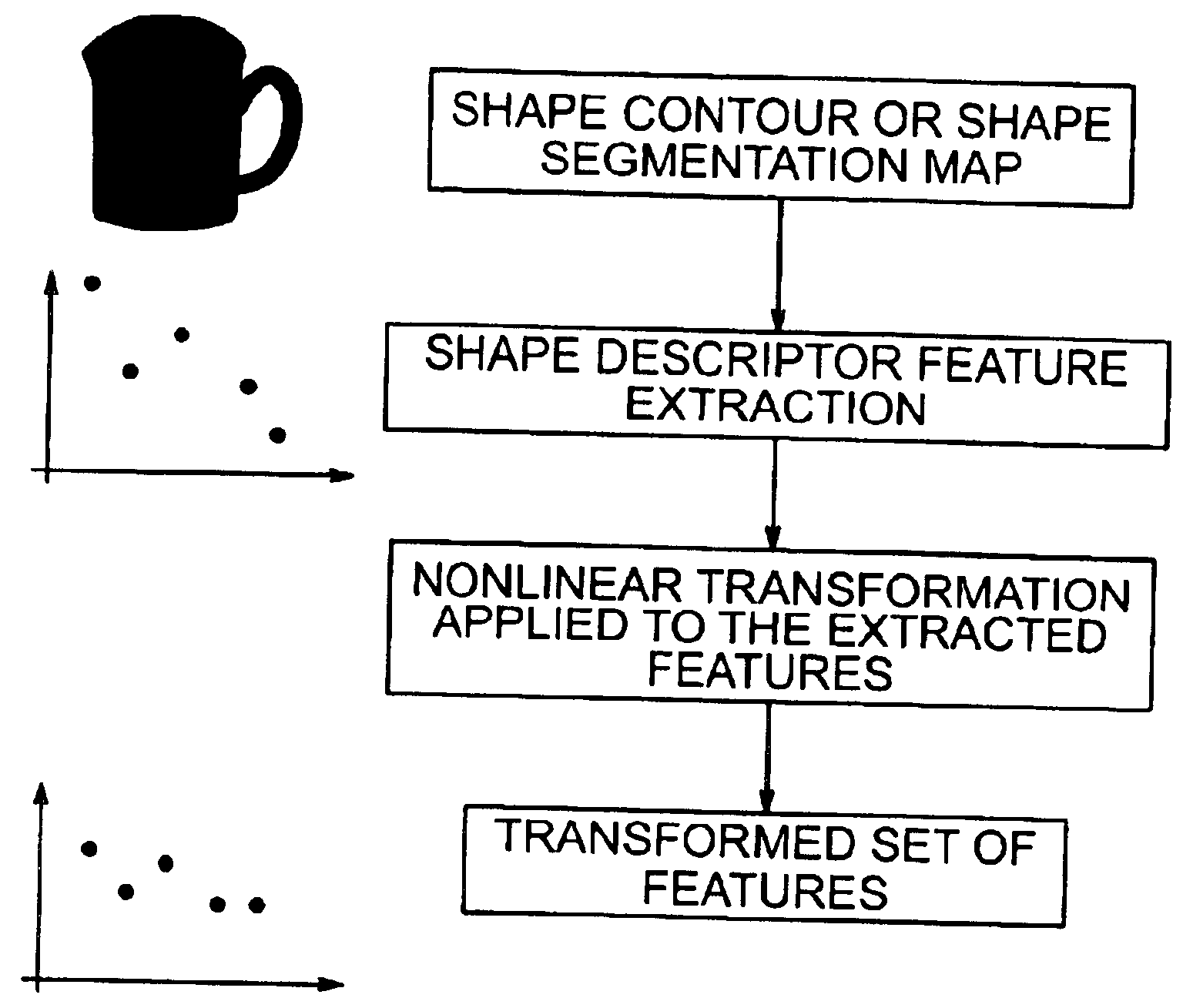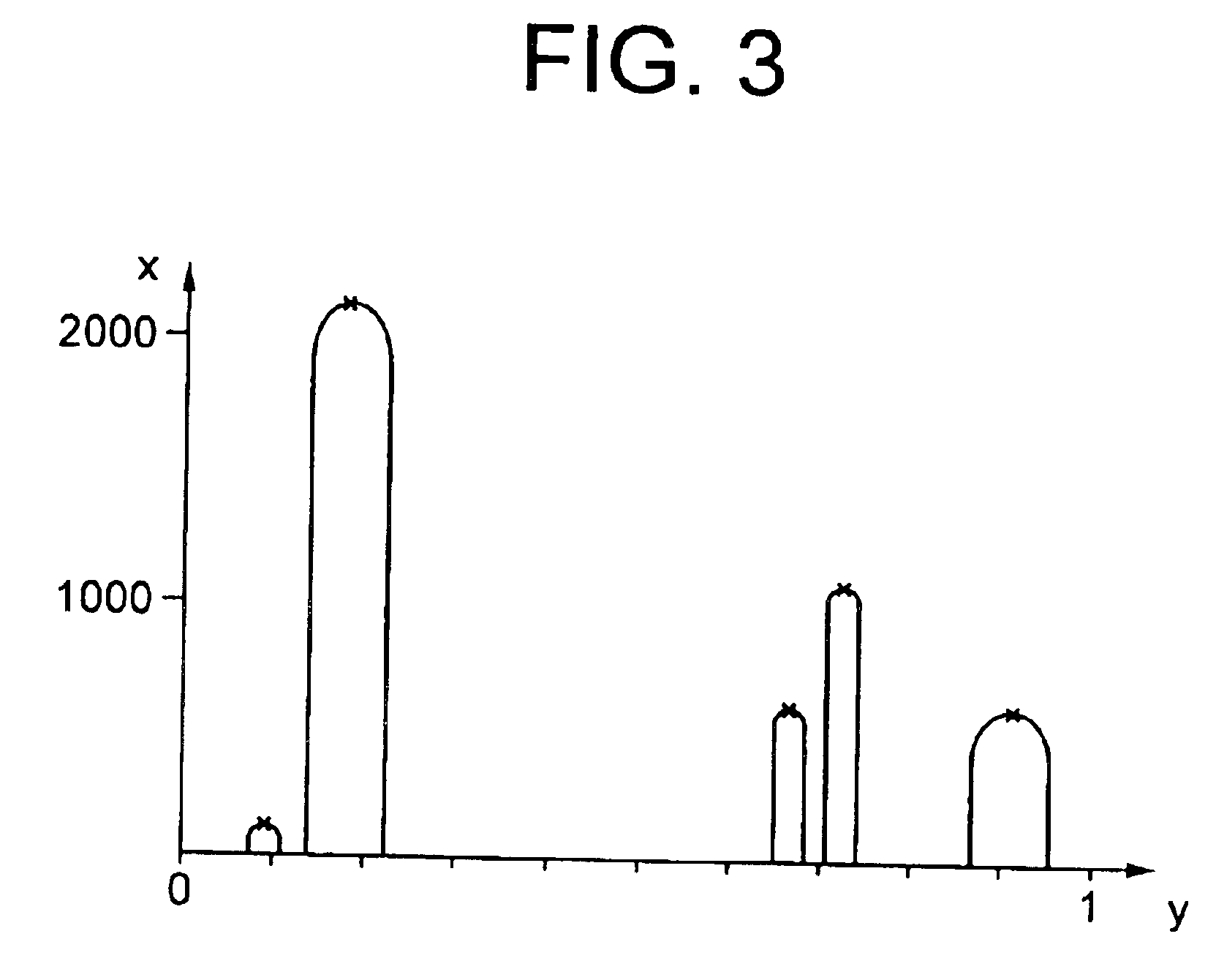Method and device for displaying or searching for object in image and computer-readable storage medium
a technology of image and computer, applied in image data processing, instruments, image analysis, etc., can solve the problems of increasing the complexity of the search and matching procedur
- Summary
- Abstract
- Description
- Claims
- Application Information
AI Technical Summary
Benefits of technology
Problems solved by technology
Method used
Image
Examples
first embodiment
[0035]FIG. 1 shows a computerised video database system according to an embodiment of the invention. The system includes a control unit 2 in the form of a computer, a display unit 4 in the form of a monitor, a pointing device 6 in the form of a mouse, an image database B including stored still and video images and a descriptor database 10 storing descriptors of objects or parts of objects appearing in images stored in the image database 8.
[0036]A descriptor for the shape of each object of interest appearing in an image in the image database is derived by the control unit 2 and stored in the descriptor database 10. The control unit 2 derives the descriptors operating under the control of a suitable program implementing a method as described below.
[0037]Firstly, for a given object outline, a CSS representation of the outline is derived. This is done using the known method as described in one of the papers mentioned above.
[0038]More specifically, the outline is expressed by a represent...
second embodiment
[0052]Another example is shown in FIG. 4.
[0053]FIG. 5 shows another example of an object shape, in this case a turtle. FIG. 6 shows the CSS peaks for the shape of FIG. 5. FIG. 7 shows the transformed peaks of FIG. 6, using the transformation given in equation (1) above, with a=6.5, b=0.5 and c=0.
[0054]The stored descriptors are used for searching purposes. The user initiates a search by drawing an object outline on the display using the pointing device (step 510). The control unit 2 then derives a CSS representation of the input outline (step 520) and then applies the transformation to the y values as described above (step 530). The resulting descriptor of the input outline is then compared with each stored descriptor in the descriptor database, known in the following as the model descriptors, using a known matching procedure (step 540).
[0055]The matching comparison is carried out using a suitable algorithm resulting in a similarity measure for each descriptor in the database. A kno...
third embodiment
[0074]An alternative embodiment will now be described. This embodiment is the same as the previous embodiment, except that a different transformation is used. More specifically, the y values are transformed using the transformation:
y′=a0+a1y.
[0075]In other words, a linear, scaling, transformation is applied.
[0076]Here, a0=41, a1=0.19.
[0077]In a variation, a0=0 and a1=0.27.
[0078]Different values of a0 and a1 can be used as appropriate.
[0079]The searching and matching procedure is essentially as described in the previous embodiment.
[0080]It has been found that applying a transformation, especially a linear transformation involving scaling or a non-linear transformation, as described above results in a descriptor which is less sensitive, eg to changes of shape outline within an object class, which consequently results in improved retrieval of objects.
[0081]In the embodiments described above, the transformation is applied to the CSS values before storing in the descriptor database 10. A...
PUM
 Login to View More
Login to View More Abstract
Description
Claims
Application Information
 Login to View More
Login to View More - R&D
- Intellectual Property
- Life Sciences
- Materials
- Tech Scout
- Unparalleled Data Quality
- Higher Quality Content
- 60% Fewer Hallucinations
Browse by: Latest US Patents, China's latest patents, Technical Efficacy Thesaurus, Application Domain, Technology Topic, Popular Technical Reports.
© 2025 PatSnap. All rights reserved.Legal|Privacy policy|Modern Slavery Act Transparency Statement|Sitemap|About US| Contact US: help@patsnap.com



